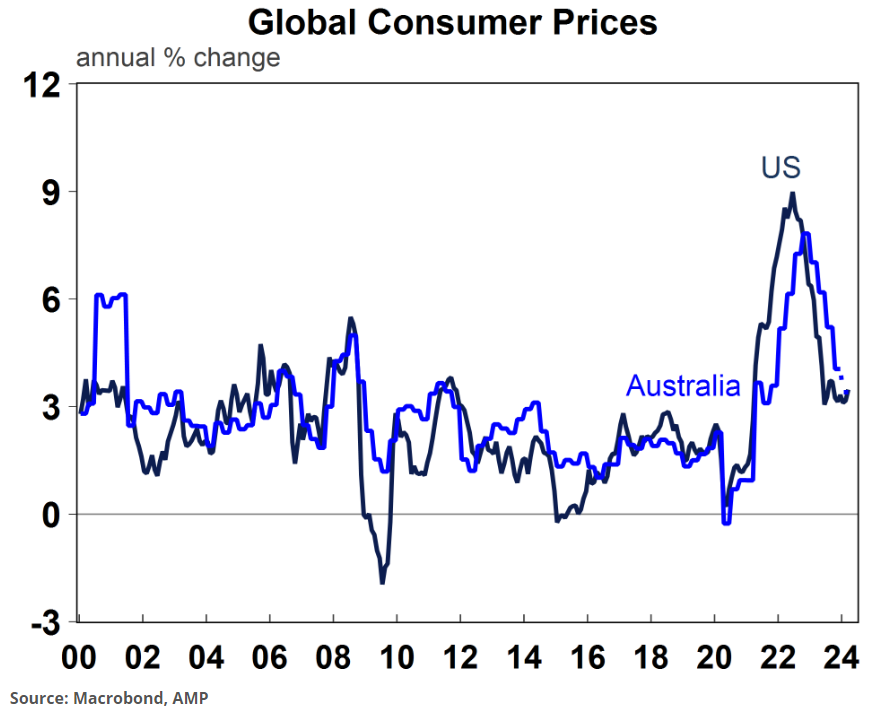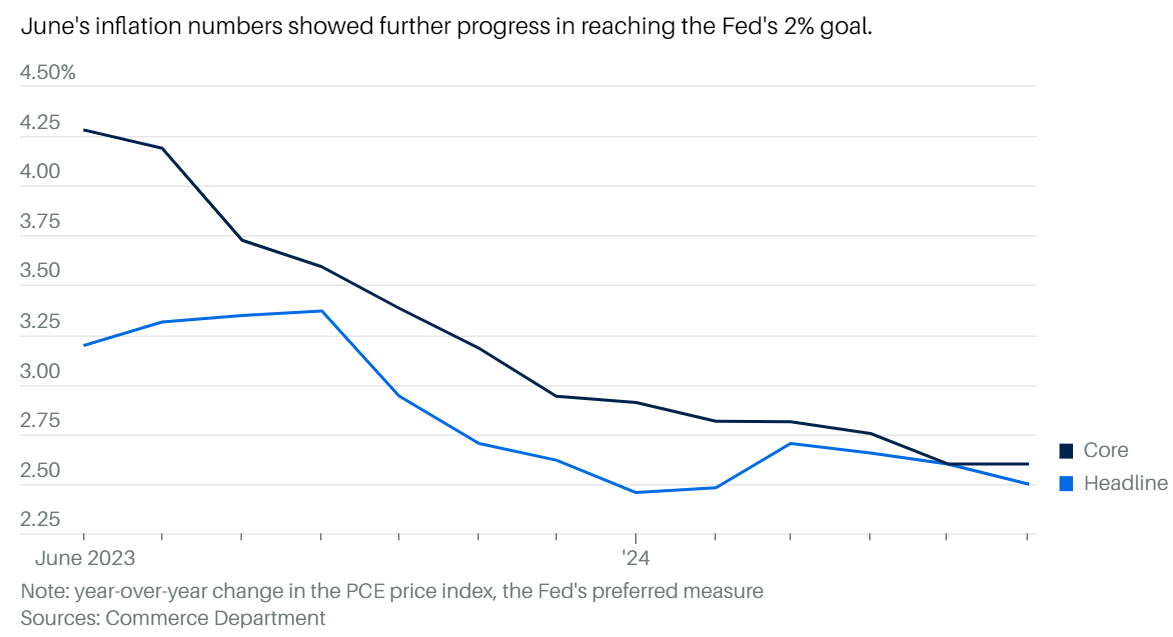As we know, Australian inflation has been severely exacerbated by the Albanese Government’s two major economic management blunders:
- excessive immigration, amplifying a housing construction price and rental shock, and
- refusing to address the war-profiteering of the East Coast gas export cartel.
As I have noted before, these two inflationary blunders compromised around 40% of inflation at their peak.
A glance at US inflation makes the point nicely. Australian and US inflation are joined at the hip over the long run:

Friday night’s PCE numbers showed that US inflation is now well below the Australian threshold of 3%:

The key difference is that the immigration rebound in Australia was much larger in proportion to the overall working population in Australia than it was in America.
The US has had around 6m foreign workers arrive since COVID, a ratio of about 4.5% to overall full-time workers.
Australia has had 1m workers arrive since COVID, a ratio of about 10% to overall full-time workers.
The Australian arrivals have transpired more quickly as well, which helps explain why the impacts on supply-constrained areas of the economy, such as housing, have suffered much more.
The second key blunder of Alboflation, energy prices, is even worse for Australia.
The US Department of Energy oversees a domestic reservation system that serves as the foundation for US gas prices and approves LNG export projects in part based on domestic availability.
As such, its gas price never rose above $15Gj during the Ukraine War shock.
In Australia, we have no such regime, at least not one that the industry-captured Resources Minister Mad King will use, so the local gas price rocketed to $70Gj during the Ukraine War shock.
Even today, US gas prices are $3Gj and Australian prices are $12Gj despite both having heaps of cheap gas.
Electricity prices follow gas prices in both nations and they are a key input price into building materials, making the local immigration inflation blunder even worse.
In short, were it not for the Albanese Government’s immigration and energy blundering, interest rates would never have reached current levels, and it would currently be raining cuts in Australia.
Just as it is about to in the United States.

